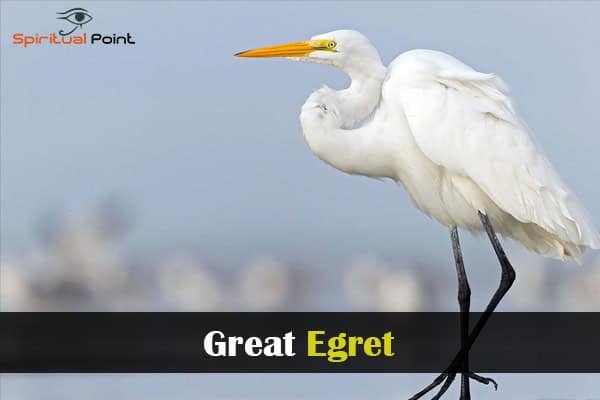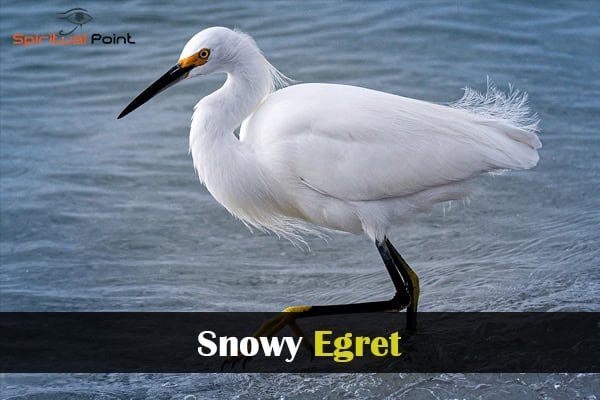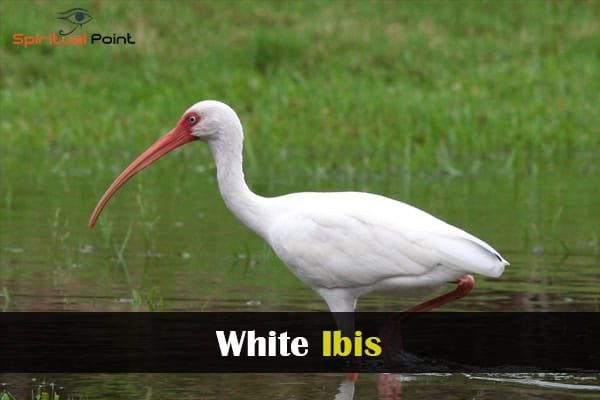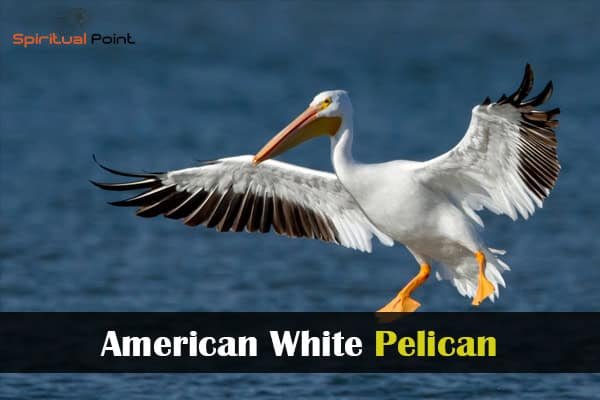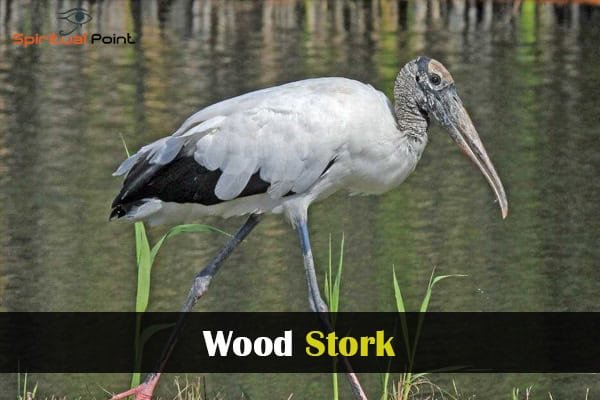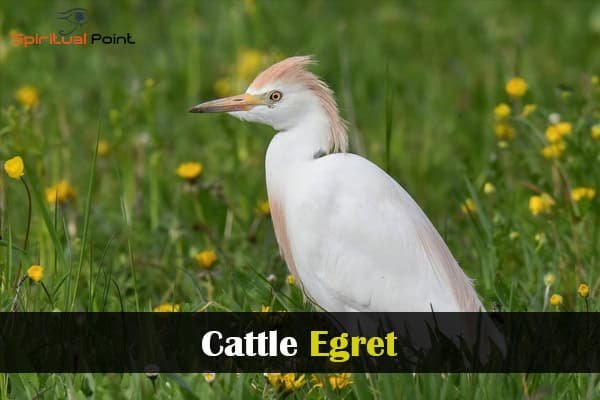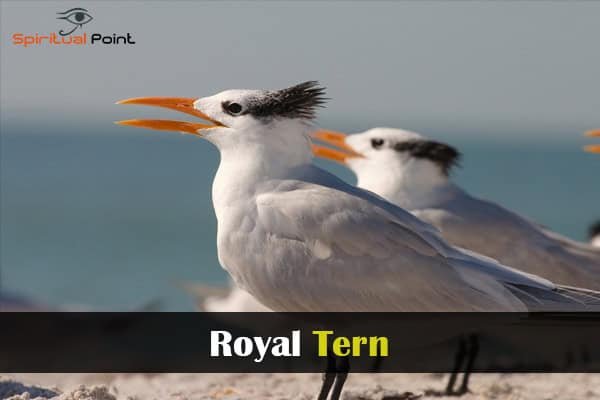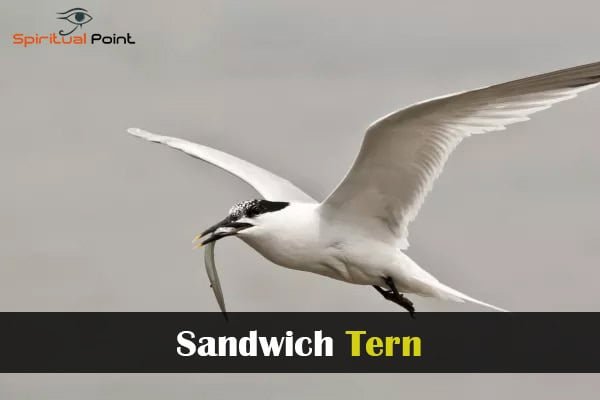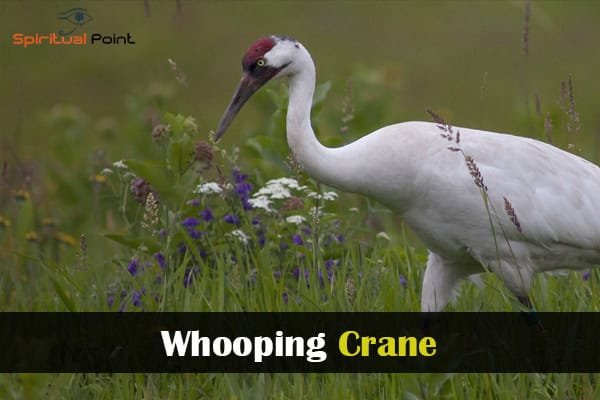Florida is one of the best places in the U.S. to see white birds of Florida in their natural homes. With its warm weather, wetlands, and long coastline, the state is a paradise for Florida birdwatching lovers. You can easily spot graceful wading birds in Florida, active Florida shorebirds, and peaceful coastal bird species throughout the year.
Whether you’re visiting the Everglades birds region or a quiet park near the beach, you’re likely to see stunning birds with pure white feathers. These birds are not just beautiful—they also play important roles in the ecosystem. This guide will explore their species, habits, and the best places to see them in Florida.
Common 10 Types of White Birds Found in Florida
- Great Egret
- Snowy Egret
- White Ibis
- American White Pelican
- Wood Stork
- Cattle Egret
- Royal Tern
- Sandwich Tern
- Laughing Gull
- Whooping Crane
1. Great Egret
- Scientific Name: Ardea alba
- Size: 37–41 inches (94–104 cm) tall
- Diet: Fish, amphibians, reptiles, insects, small mammals
- Lifespan: Up to 15 years in the wild
- Wingspan: 52–67 inches (132–170 cm)
- Weight: 1.5–3.3 pounds (700–1,500 grams)
The Great Egret is one of the most common wading birds in Florida. It stands tall and moves with grace through shallow water. Its white feathers shine in the sun, while its long yellow bill and black legs make it easy to identify. These birds are often seen standing still, waiting to strike at fish below. Their calm patience and slow steps make watching them peaceful. Great Egret nesting behavior includes building large stick nests high in trees. These nests are part of a bird rookery Florida where many other birds also nest together.
The Great Egret almost disappeared in the 1800s due to plume hunting. Women’s hats used their feathers, and thousands were killed. But thanks to laws and protection, this bird made a strong comeback. Today, they are a proud symbol of wetland conservation success stories. If you visit Everglades birds habitats, you’ll surely spot one.
2. Snowy Egret
- Scientific Name: Egretta thula
- Size: 22–27 inches (56–69 cm) tall
- Diet: Fish, crustaceans, insects, frogs, small reptiles
- Lifespan: Up to 17 years in the wild
- Wingspan: 39–41 inches (99–104 cm)
- Weight: 13–14 ounces (370–400 grams)
Smaller but just as charming, the Snowy Egret is a star among the egret species. It has all-white feathers like its cousin, but what stands out are its Snowy Egret yellow feet. These bright feet help it stir up fish in the water as it hunts. With a black bill and black legs, its feet flash like lights in the shallow water. This bird is fast and full of energy. It doesn’t wait quietly like the Great Egret—it dances around.
During nesting season, the Snowy Egret grows fine lace-like feathers. These feathers made it a target in the fashion world long ago. But again, protection laws saved it. Today, this bird nests in shorebird colonies on beaches and swamps across Florida. Their calls fill the air at nesting sites. Florida bird habitats like mangroves and marshes offer perfect homes for them.
3. White Ibis
- Scientific Name: Eudocimus albus
- Size: 22–27 inches (56–69 cm) tall
- Diet: Insects, crustaceans (like crayfish), small fish, snails
- Lifespan: Up to 16 years in the wild
- Wingspan: 35–41 inches (89–105 cm)
- Weight: 1.6–2.3 pounds (700–1,050 grams)
With a body of bright white and a curved red bill, the White Ibis is one of the most familiar native Florida birds. The young ones are brown and white, but they turn fully white as they grow. You’ll often see them in flocks, walking across lawns or digging in the mud. The White Ibis curved bill helps it search for food like bugs and crayfish in wet ground. This clever tool lets it dig deep and feel for prey.
In places like Ibis Florida colonies, these birds nest in large groups. Their loud calls and flapping wings fill the air in spring. They are common in parks, wetlands, and even near shopping centers. Their ability to live in both wild and urban places makes them a special part of Florida birdwatching.
4. American White Pelican
- Scientific Name: Pelecanus erythrorhynchos
- Size: 50–70 inches (127–180 cm) tall
- Diet: Mainly fish (carp, minnows, catfish), amphibians, crustaceans
- Lifespan: Up to 25 years in the wild
- Wingspan: 95–120 inches (240–305 cm)
- Weight: 11–20 pounds (5–9 kg)
The American White Pelican is one of the largest Pelicans in Florida. With an incredible American White Pelican wingspan that can reach almost 10 feet, it’s hard to miss. These birds are only in Florida during winter. They fly here from the north when the weather gets cold. Unlike their brown cousins, they don’t dive. They glide across the water and scoop fish with their huge bills.
They are often seen floating in groups, working together to trap fish. During nesting season, they head north. In Florida, they are quiet, graceful, and full of wonder. You can find them at Florida birding locations like lakes, estuaries, and bays. Seeing one in flight is like watching a plane soar through the air.
| Bird | Wingspan | Season in Florida | Behavior |
|---|---|---|---|
| Great Egret | 55-67 in | Year-round | Slow, patient hunter |
| Snowy Egret | 34-40 in | Year-round | Fast, active forager |
| American White Pelican | 9-10 ft | Winter only | Group fish herding |
5. Wood Stork
- Scientific Name: Mycteria americana
- Size: 33–45 inches (85–115 cm) tall
- Diet: Fish, amphibians, insects, and crustaceans
- Lifespan: Up to 22 years in the wild
- Wingspan: 59–71 inches (150–180 cm)
- Weight: 4.5–7.3 pounds (2–3.3 kg)
One of the strangest looking Florida marsh birds is the Wood Stork. It has white feathers but a bald, scaly head. When it flies, its black wings make it look like a creature from the past. This bird’s feeding style is called Wood Stork tactile foraging. It walks through water with its beak open. When it touches a fish, it snaps its bill shut instantly.
These birds need just the right water levels to breed. Not too dry, not too wet. Their nests are high in trees above the swamp. They are part of large bird rookery Florida areas with many loud, busy birds. The Wood Stork was once listed as endangered but has slowly returned thanks to bird conservation in Florida.
6. Cattle Egret
- Scientific Name: Bubulcus ibis
- Size: 18–22 inches (46–56 cm) tall
- Diet: Insects (especially grasshoppers), spiders, frogs, small reptiles, and occasionally small birds
- Lifespan: Up to 17 years in the wild
- Wingspan: 34–38 inches (86–96 cm)
- Weight: 9–18 ounces (250–510 grams)
Unlike other egrets, the Cattle Egret loves dry ground and grassy fields. It is known for Cattle Egret following livestock. These smart birds follow cows and tractors, grabbing insects that get stirred up. They are short and stocky compared to other egret species, but they are just as lovely.
During breeding season, they show orange on their heads and backs. These birds came from Africa on their own and spread across the Americas. They nest in big groups with other birds. You can often see them in fields, farms, or even airports. Their story is not about survival but smart adaptation.
7. Royal Tern
- Scientific Name: Thalasseus maximus
- Size: 17–20 inches (43–50 cm) long
- Diet: Mainly fish (like anchovies, mullet), also crustaceans
- Lifespan: Up to 30 years in the wild
- Wingspan: 43–50 inches (110–127 cm)
- Weight: 13–15 ounces (370–430 grams)
The Royal Tern adds charm to the beach with its gray back and bright orange bill. They are common coastal bird species seen flying above waves or resting on sandy shores. In breeding season, they have a shaggy black crest on their head. Their homes are known as Royal Tern coastal colonies. These are busy places full of chicks and noise.
They lay eggs on open sand, often with little cover. The chicks gather in groups while parents fly back and forth with food. These birds dive for fish just below the water’s surface. Their sharp calls and sudden dives make them fun to watch. They are often seen among Terns on Florida beaches.
Related: 16 Types of Black Birds in Michigan
8. Sandwich Tern
- Scientific Name: Thalasseus sandvicensis
- Size: 15–17 inches (38–43 cm) long
- Diet: Small fish (like sand eels, anchovies), shrimp, and crustaceans
- Lifespan: Up to 25 years in the wild
- Wingspan: 30–34 inches (76–86 cm)
- Weight: 7–9 ounces (200–255 grams)
The Sandwich Tern is sleek and graceful. It is known for its Sandwich Tern yellow-tipped bill. With a pale gray back and white belly, it blends into the shore. These birds love to stay close together in colonies. They lay their eggs on bare ground, just like their Royal cousins.
Their call is raspy, and they hover before diving for small fish. Watching them fly feels like watching a dance. They are part of the many seabirds Florida is lucky to host. They often share space with other terns and gulls. But their small size and soft voice make them special.
9. Laughing Gull (White-headed in non-breeding plumage)
- Scientific Name: Leucophaeus atricilla
- Size: 15–18 inches (38–46 cm) long
- Diet: Fish, insects, crustaceans, garbage, and eggs—very opportunistic
- Lifespan: Up to 22 years in the wild
- Wingspan: 36–47 inches (92–120 cm)
- Weight: 8.5–13 ounces (240–370 grams)
The Laughing Gull is everywhere along the coast. In summer, they have black heads. In winter, they change to white-headed birds. This seasonal change gives them a special place among Florida shorebirds. Their sound is where their name comes from—the Laughing Gull breeding call sounds like laughter.
They are smart and bold. They eat almost anything—fish, scraps, and even food dropped by people. Also, They nest in big colonies on beach islands. These birds are perfect examples of how Florida’s bird migration patterns change with the seasons. Watching them fight over food can be very entertaining.
Also Visit:16 White Birds In Michigan
10. Whooping Crane
- Scientific Name: Grus americana
- Size: 50–52 inches (127–132 cm) tall
- Diet: Crustaceans, insects, small fish, frogs, and plant matter like tubers and grains
- Lifespan: Up to 22–30 years in the wild (longer in captivity)
- Wingspan: 87–90 inches (220–230 cm)
- Weight: 12–16 pounds (5.5–7.3 kg)
The Whooping Crane is one of the tallest and rarest crane species Florida has. With pure white feathers, black wingtips, and a red crown, this bird is a true wonder. It was once almost gone. Now, thanks to strong protection, a few still live in Florida. They are known as Whooping Crane endangered species.
They live in quiet wetlands and nest in floating grass beds. Each pair stays close, working together to raise one or two chicks. Their slow steps and careful movements make them look noble. Their return is one of the greatest wetland conservation success stories in the country.
Where to Look for White Birds in Florida
If you’re wondering where to see white birds in Florida, there are many great places. Everglades National Park is the top choice. Here, you’ll find Everglades birds like egrets, ibises, and storks in their natural home. Merritt Island National Wildlife Refuge is another amazing place. During winter, it fills with migratory birds in Florida.
Corkscrew Swamp Sanctuary near Naples has long boardwalks through swamps and forests. You can spot wetland birds in peace and quiet. For beaches, Fort De Soto Park near Tampa offers amazing views of Florida shorebirds and terns on Florida beaches. These places show the magic of Florida bird habitats.
Birdwatching Tips & Best Time to Visit
Knowing the best time for birdwatching Florida makes a big difference. Mornings and evenings are best. Birds are active, and the light is perfect for photos. Winter brings many migratory birds in Florida, making it a favorite season for bird lovers. Summer shows breeding behavior and colorful feathers.
Bring binoculars, wear quiet clothes, and walk slowly. Patience is key. Some birds are shy, others curious. If you have a camera, avoid using flash. The joy of Florida birdwatching comes from quiet observation. Watching white birds of Florida is not just a hobby—it’s a peaceful, rewarding experience.
Must Read: 21 Facts About Crows
Conservation of White Birds in Florida
The white birds we see today are survivors. Many were once hunted for feathers or lost homes due to drained swamps. Thanks to strong laws and protected areas, many made a comeback. Bird conservation in Florida includes saving wetlands, stopping pollution, and raising awareness.
Groups and volunteers now help protect nests, clean habitats, and track bird numbers. Schools and parks teach children the value of native Florida birds. Saving birds is not just about birds—it’s about keeping nature alive for everyone. From endangered birds Florida to common egrets, each bird matters.
Conclusion
Florida is one of the best places on Earth to see white birds of Florida. Their beauty, grace, and variety make every walk outdoors feel magical. From the tall Great Egret to the rare Whooping Crane, these birds are treasures of the sky and swamp.
Exploring Florida birding locations brings you close to nature. It teaches respect, patience, and love for the land. By learning about these birds and helping protect them, you become part of their story. So take your time, look to the skies, and let the wings of Florida’s white birds guide you to wonder.
~More Posts You Might Like~
- Birds with 8 Letters
- Can Squirrels Eat Apple Cores?
- 16 Types of Black Birds in Michigan
- 16 White Birds In Michigan
Frequently Asked Questions
Q1: What are those white birds in Florida called?
A: They are often Great Egrets, Snowy Egrets, White Ibises, or White Herons—common white wading birds in Florida.
Q2: What is the difference between a White Ibis and an egret?
A: White Ibises have curved orange bills and pink legs, while egrets have straight pointed yellow or black bills and long black or yellowish legs.
Q3: What are the little white egrets in Florida?
A: Likely Snowy Egrets—smaller white birds with black legs, yellow feet, and a slender black bill.
Q4: What is the difference between a heron and an egret in Florida?
A: Both are wading birds, but egrets are generally smaller, more delicate, and often all white, while herons come in various colors and tend to be larger.
Q5: What does it mean to see a white heron?
A: Spiritually, a white heron symbolizes peace, purity, and guidance—a reminder to stay calm and follow your intuition.
Q6: Did I see a crane or a heron?
A: Cranes have shorter beaks, straight necks in flight, and often move in pairs. Herons have longer necks (curved in flight) and are usually solo near water.

